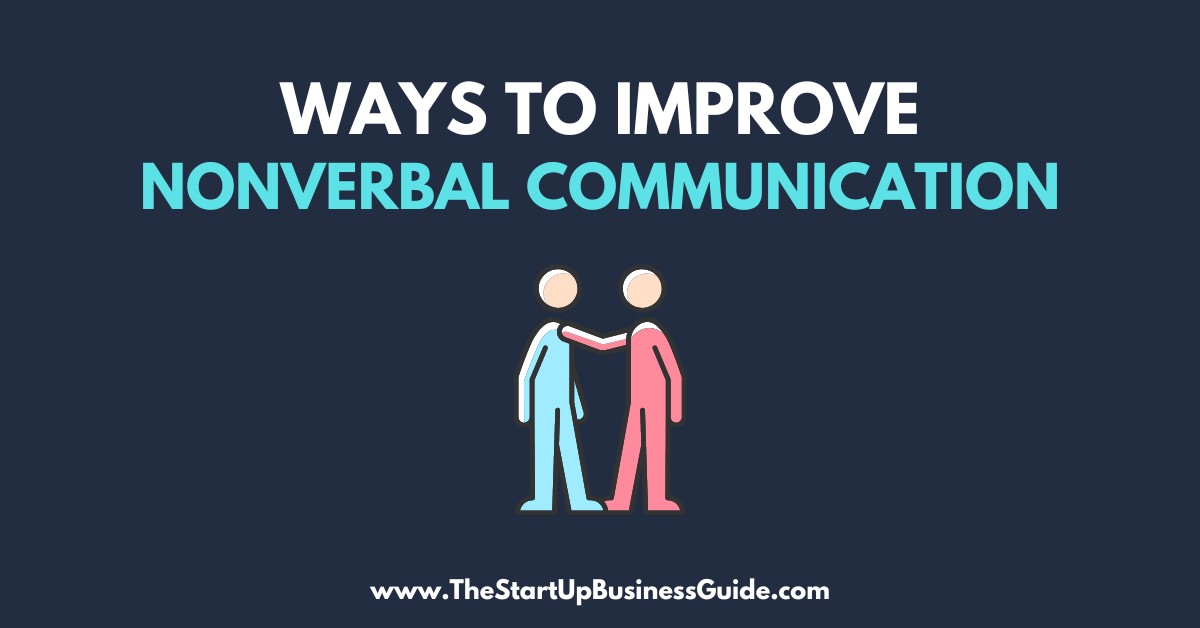8 Effective Ways to Improve Your Nonverbal Communication

Nonverbal communication is an important aspect of our daily interactions.
It includes all forms of communication that don’t involve words, such as body language, facial expressions, gestures, and tone of voice.
Non-verbal communication can convey emotions, establish trust, and influence others.
In this blog post, we will discuss 8 effective ways to improve your nonverbal communication.
1. Posture
The way we stand and sit can convey confidence or insecurity.
Good posture can make us appear more confident and in control. On the other hand, slouching can make us appear uninterested or insecure.
Here are a few tips for improving posture:
- Stand up straight and pull your shoulders back
- Keep your head up and your chin parallel to the ground
- Keep your weight balanced evenly on both feet.
2. Facial Expressions
Facial expressions are one of the most powerful forms of nonverbal communication.
They can convey a wide range of emotions, such as happiness, sadness, anger, and surprise.
Here are a few tips for practicing and controlling facial expressions:
- Practice in the mirror to become more aware of your expressions
- Try to maintain a neutral expression when in a professional setting
- Be mindful of your expressions when interacting with others.
3. Eye Contact
Eye contact is an important aspect of building trust and establishing a connection with others.
Avoiding eye contact can convey a lack of interest or dishonesty.
A few tips for making effective eye contact are:
- Look directly into the other person’s eyes
- Maintain eye contact for a few seconds before looking away
- Repeat the process throughout the conversation.
4. Gestures
Gestures can support verbal communication and help to emphasize or clarify what we are saying.
Here are some excellent tips for using gestures effectively:
- Use gestures to emphasize important points
- Keep gestures simple and natural
- Avoid using too many gestures as it can be distracting.
5. Proximity
Proximity refers to the distance between people when they are communicating.
It can affect relationships and convey different meanings.
Below are some useful tips for using proximity appropriately:
- Maintain a comfortable distance with strangers
- Get closer to people you know well or have a closer relationship with
- Be mindful of cultural differences when it comes to proximity.
6. Touch
Touch can convey emotions and establish a connection with others.
However, it is important to be aware of the cultural and personal differences when it comes to touch.
Here are a few tips for using touch correctly:
- Ask for permission before touching someone
- Use touch to convey comfort or support
- Avoid touch when it may be unwelcome or inappropriate.
7. Voice
Voice can convey emotions and establish a connection with others.
Here are a few tips for improving voice projection and tone:
- Speak clearly and at a moderate pace
- Use a pleasant tone of voice
- Practice deep breathing exercises to improve voice projection.
8. Appearance
Appearance can affect first impressions and can convey professionalism or lack thereof.
Here are few best tips for dressing appropriately and maintaining grooming:
- Dress appropriately for the occasion or setting
- Maintain good hygiene and grooming
- Pay attention to details such as ironing clothes, polished shoes and cleanliness.
FAQs about Nonverbal Communication
Here are some frequently asked questions and answers:
1. What is nonverbal communication?
Nonverbal communication refers to all forms of communication that don’t involve words, such as body language, facial expressions, gestures, and tone of voice.
It can convey emotions, establish trust, and influence others.
Nonverbal communication can be conscious or unconscious, and it can complement or contradict verbal communication.
2. Why is nonverbal communication important?
Nonverbal communication is important because it can convey emotions, establish trust, and influence others.
It can also provide additional information that verbal communication may not convey.
For example, a smile can indicate that a person is happy, even if they don’t say it.
Further, nonverbal communication can also help to establish and maintain relationships.
3. What are some common forms of nonverbal communication?
Some common forms of nonverbal communication include body language, facial expressions, gestures, proximity, eye contact, touch, and tone of voice.
4. How can nonverbal communication vary across cultures?
Nonverbal communication can vary across cultures.
For example, in some cultures, direct eye contact is seen as a sign of respect, while in others, it is seen as a sign of disrespect.
Furthermore, some cultures may place more emphasis on touch as a form of communication, while others may avoid it.
It’s vital to be aware of these cultural differences when interacting with people from different backgrounds.
5. Can nonverbal communication be controlled and practiced?
Yes, nonverbal communication can be controlled and practiced.
By becoming more aware of our own nonverbal communication, we can make an effort to improve it.
For example, practicing good posture and maintaining eye contact can help to convey confidence.
Moreover, by being mindful of cultural and personal differences, we can use nonverbal communication more effectively.
6. How can nonverbal communication be used in a business setting?
Nonverbal communication can be used in a business setting to convey professionalism, establish trust, and influence others.
For example, having a good posture and a firm handshake can convey confidence and professionalism.
Further, maintaining eye contact and smiling can help to establish trust and build relationships with colleagues, clients, and partners.
Conclusion
In conclusion, nonverbal communication is an important aspect of our daily interactions.
By improving posture, facial expressions, eye contact, gestures, proximity, touch, voice, and appearance, we can convey emotions, establish trust, and influence others in a positive way.
It’s very important to remember that nonverbal communication can vary depending on culture and personal preferences, so it’s important to be aware of these differences when interacting with others.
Practice and awareness are key to improving nonverbal communication skills.
It’s worth taking the time to reflect on your own nonverbal communication and make an effort to improve it.
In the end, effective nonverbal communication can help you to build stronger relationships and achieve greater success in your personal and professional life.






